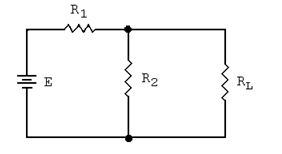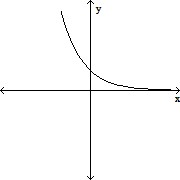Use the graph to find the intervals on which it is increasing, decreasing, or constant.
A. Increasing on (-?, 0); decreasing on (0, ?)
B. Decreasing on (-?, ?)
C. Decreasing on (-?, 0); increasing on (0, ?)
D. Increasing on (-?, ?)
Answer: D
You might also like to view...
R1 = 2.2 Kê, R2 = 3.3 Kê, RL = 1.2 Kê, and E = 20 V. Find GN.

a. 366 æS
b. 454 æS
c. 757 æS
d. 576 æS
e. 392 æS
Write the sample space for the given experiment.A box contains 3 blue cards numbered 1 through 3, and 4 green cards numbered 1 through 4. A blue card is picked, followed by a green card.
A. {7} B. {12} C. {(1, 1), (1, 2), (1, 3), (1, 4), (2, 1), (2, 2), (2, 3), (2, 4), (3, 1), (3, 2), (3, 3), (3, 4)} D. {(1, 1), (1, 2), (1, 3), (2, 1), (2, 2), (2, 3), (3, 1), (3, 2), (3, 3), (4, 1), (4, 2), (4, 3)}
Solve the problem.In 1992, the population of a country was estimated at 5 million. For any subsequent year, the population, P(t) (in millions), can be modeled using the equation  where t is the number of years since 1992. Determine the year when the population will be 39 million.
where t is the number of years since 1992. Determine the year when the population will be 39 million.
What will be an ideal response?
Each of the following is the graph of a function f(x) = ax. Determine from the graph whether a > 1 or 0 < a < 1.
A. 0 < a < 1 B. a > 1